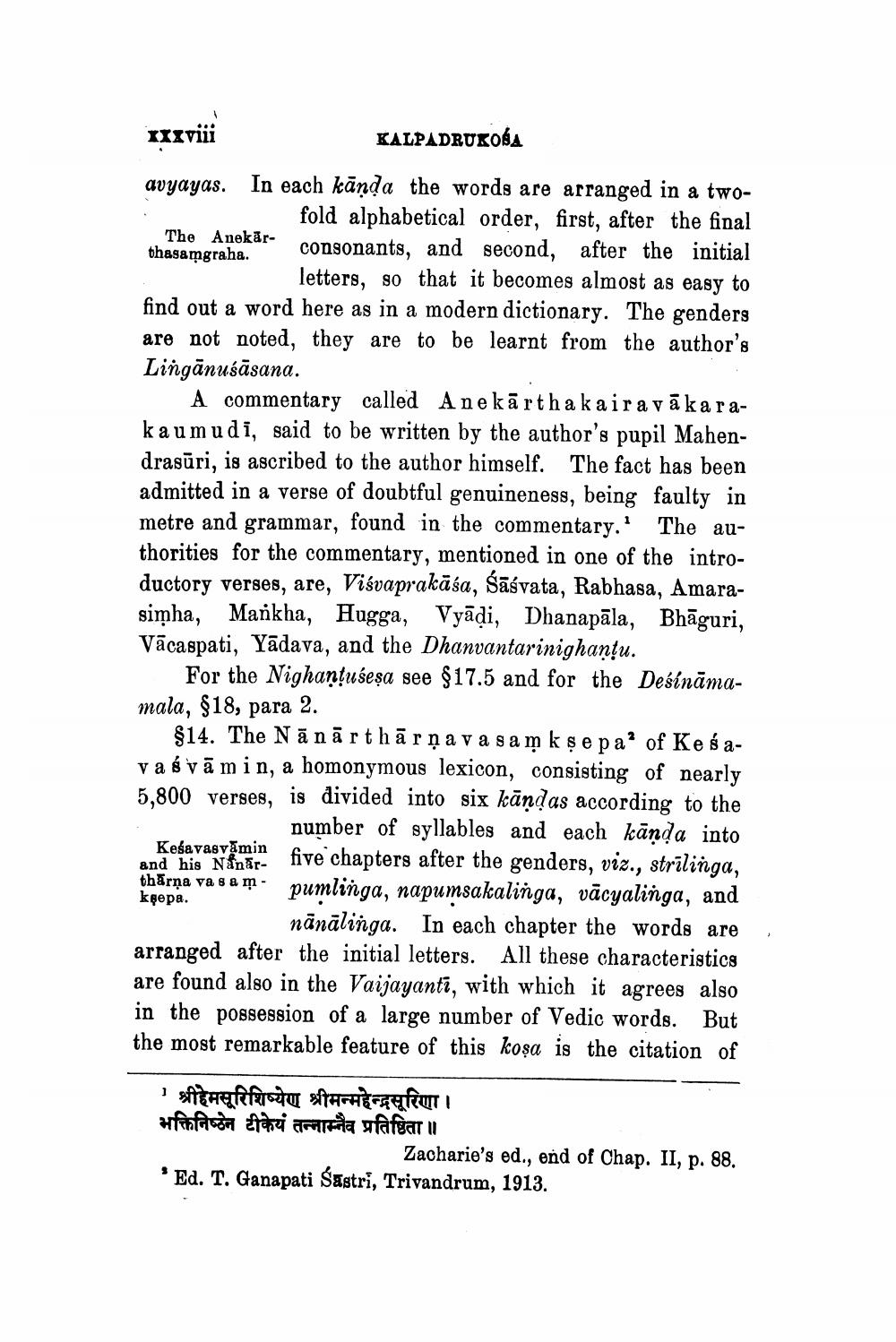________________
IIxviii
KALPADRUKOSA
avyayas. In each kānda the words are arranged in a two
fold alphabetical order, first, after the final The Anekarthasamarahaar consonants, and second, after the initial
letters, so that it becomes almost as easy to find out a word here as in a modern dictionary. The genders are not noted, they are to be learnt from the author's Lingānuśāsana.
A commentary called Anekārthakair a vākarakaumudi, said to be written by the author's pupil Mahendrasūri, is ascribed to the author himself. The fact has been admitted in a verse of doubtful genuineness, being faulty in metre and grammar, found in the commentary.' The authorities for the commentary, mentioned in one of the introductory verses, are, Visvaprakāśa, śāśvata, Rabhasa, Amarasimha, Mankha, Hugga, Vyādi, Dhanapāla, Bhāguri, Vācaspati, Yādava, and the Dhanvantarinighanțu.
For the Nighanțuśeşa see $17.5 and for the Dešināmamala, $18, para 2.
$14. The Nā nārthārņa va sam kşe pa* of Kesava svā min, a homonymous lexicon, consisting of nearly 5,800 verses, is divided into six kāņdas according to the
number of syllables and each kāņda into Keśavasvāmin five chapters after the genders, viz., strīlinga, thårņa va s m. pumlinga, napumsakalinga, vācyalinga, and kpepa.
nānālinga. In each chapter the words are arranged after the initial letters. All these characteristics are found also in the Vaijayantī, with which it agrees also in the possession of a large number of Vedic words. But the most remarkable feature of this koşa is the citation of
1 श्रीहेमसूरिशिष्येण श्रीमन्महेन्द्रसूरिणा। भक्तिनिष्ठेन टीकेयं तन्नाम्नैव प्रतिष्ठिता॥
Zacharie's ed., end of Chap. II, p. 88. *Ed. T. Ganapati Gastri, Trivandrum, 1913.




